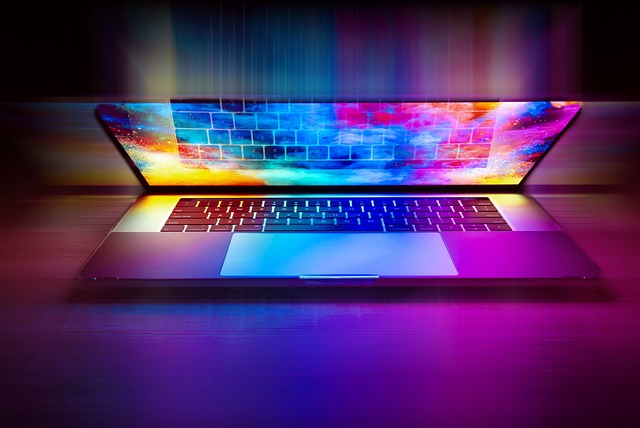To maintain and optimize your laptop's battery health for extended usage between charges, it's crucial to manage energy consumption effectively. Adjusting your screen brightness to a comfortable level that minimizes power use is important, especially when in well-lit environments. Activating the laptop's built-in power-saving features, which adjust the processor and display settings for optimal battery life, is also beneficial. Regular maintenance practices include closing unnecessary applications, updating software, and avoiding excessive heat. When a significant drop in battery capacity occurs, it may be time to consider replacing your laptop battery with a genuine OEM replacement to ensure peak performance and longevity. The lifespan of a lithium-ion battery is typically three to five years under normal use, but factors like frequent full discharges and ambient temperature can impact this. Warning signs such as the battery holding less than 80% of its original charge and unexpected shutdowns suggest it's time for a replacement. Always ensure that the replacement battery you choose is compatible with your laptop model and comes from a reputable manufacturer to guarantee optimal performance and prevent damage to your device.
prolonging your laptop’s battery life is a skill honed through knowledge and practice. Whether you’re a professional on the go or a student working between classes, mastering the art of extending your laptop’s power can be game-changing. This article delves into practical tips to enhance your laptop’s battery longevity. From understanding your laptop’s power consumption patterns to optimizing energy settings for peak efficiency, and knowing the best practices for maintaining and replacing your laptop battery, these insights will guide you through the process of maximizing your device’s performance. If you’re considering a replacement laptop battery due to aging cells, this guide also offers wise counsel on when it’s time to make that switch.
- Understanding Your Laptop's Power Consumption
- Optimizing Energy Settings for Maximum Efficiency
- Maintaining and Replacing Your Laptop Battery: Best Practices
- When to Consider a Replacement Laptop Battery
Understanding Your Laptop's Power Consumption

To effectively manage your laptop’s battery life and extend its usage between charges, it’s crucial to have a clear understanding of your device’s power consumption patterns. Each component in your laptop contributes to overall power usage, with the display, processor, and hard drive being significant factors. The display, for instance, is often one of the largest power consumers when set at high brightness levels. Lowering the screen brightness to a comfortable level can significantly reduce energy consumption. Similarly, managing the performance settings of your processor can also contribute to longer battery life. Opting for power-saving modes or reducing the CPU’s clock speed during periods of inactivity or less demanding tasks can conserve energy.
When it comes to prolonging your laptop’s battery longevity, regular maintenance and using genuine replacement laptop batteries are key. Genuine components are designed to work optimally with your specific model, ensuring that you get the most out of each charge. Over time, batteries naturally degrade, but by avoiding excessive heat exposure, dimming the screen, and closing applications running in the background, you can mitigate this degradation. If you notice a significant decline in battery performance, consider replacing the battery with one specifically tailored to your laptop model for the best results. This proactive approach not only helps in extending your current battery’s life but also ensures that you have a reliable power source when a replacement is necessary.
Optimizing Energy Settings for Maximum Efficiency

To maximize your laptop’s battery efficiency, it’s crucial to optimize its energy settings. Begin by calibrating your screen brightness to a level that’s comfortable for your eyes while not overdrawing power unnecessarily. Lowering the screen’s brightness can significantly extend your laptop’s battery life, especially if you often work in environments with ambient light. Additionally, ensure that your laptop’s energy-saving modes are activated; these modes reduce the processor’s speed and dim the display when on battery power, conserving energy for tasks that require full performance. For users who frequently find themselves away from an outlet, adjusting the ‘Power & Sleep’ settings can be particularly beneficial. Set your screen to turn off after a short period of inactivity and choose the longest available standby and hibernation times. If you have an older model or notice your laptop’s battery life is shorter than usual, considering a replacement laptop battery might be the most cost-effective solution. It’s often surprising how much a new battery can restore a device’s longevity between charges, which is especially important for professionals and students who rely on their laptops throughout the day. Regularly updating your system’s software and drivers can also play a role in energy efficiency, as manufacturers often release patches that improve power management. By taking these steps to optimize energy settings, you can ensure your laptop operates at maximum efficiency, keeping the replacement laptop battery in good use for as long as possible.
Maintaining and Replacing Your Laptop Battery: Best Practices

To maximize your laptop’s battery longevity and performance, it’s crucial to understand the nuances of maintaining and replacing your laptop battery. Regular maintenance can significantly extend the lifespan of your battery, thereby reducing the frequency with which you might need a replacement laptop battery. Adopt energy-efficient habits such as adjusting screen brightness, closing unnecessary applications, and disconnecting your charger when full to preserve charge cycles. Additionally, keeping your laptop’s operating system up-to-date can improve battery management by optimizing power usage based on software efficiency.
When the time comes for a replacement laptop battery, ensure that you source a high-quality battery compatible with your device’s make and model. OEM (Original Equipment Manufacturer) batteries are recommended as they are designed to perform at the same level as your laptop’s original battery. Professional installation is also advised to prevent any potential damage during the replacement process. Proper maintenance and timely replacement with a reliable battery can ensure that your laptop remains a versatile tool, whether for work or entertainment, without frequent charging interruptions.
When to Consider a Replacement Laptop Battery

When your laptop’s battery performance begins to wane, it’s essential to assess whether a replacement laptop battery would be a worthwhile investment. Typically, high-quality lithium-ion batteries can last between three to five years with regular use, but factors such as the frequency of full discharge cycles and the operating environment can influence this timeline. If you notice that your battery no longer retains charge as effectively as before—holding less than 80% of its original capacity for a substantial period—it might be time to consider a new battery. Another critical indicator is if your laptop exhibits a pattern of shutting down unexpectedly due to low power, even when the battery charge level appears adequate. This could signify degradation of the battery’s cells, which affects its ability to hold and supply energy. In such cases, replacing the battery can restore optimal performance to your device, ensuring you have reliable power for your tasks without the constant anxiety of a dead or dying battery. It’s advisable to look into a replacement when these signs become apparent, as prolonged use of a compromised battery can lead to more significant issues with your laptop, potentially affecting its other components and overall functionality. When shopping for a replacement laptop battery, ensure it’s compatible with your laptop model and preferably from a reputable manufacturer to guarantee quality and longevity.
To extend your laptop’s battery life effectively, it’s crucial to manage power consumption through smart energy settings and maintain optimal battery health. By understanding your laptop’s power usage patterns and adjusting the system’s settings accordingly, you can significantly enhance efficiency. Regular maintenance and timely replacement of your laptop battery, as detailed in the guide on best practices for battery care, are key to ensuring longevity and performance. When your battery’s capacity diminishes beyond a reasonable threshold, considering a replacement laptop battery becomes prudent. Implementing these tips will help you make the most of your current laptop or determine when it’s time for an upgrade, ensuring you remain connected without constraint.
